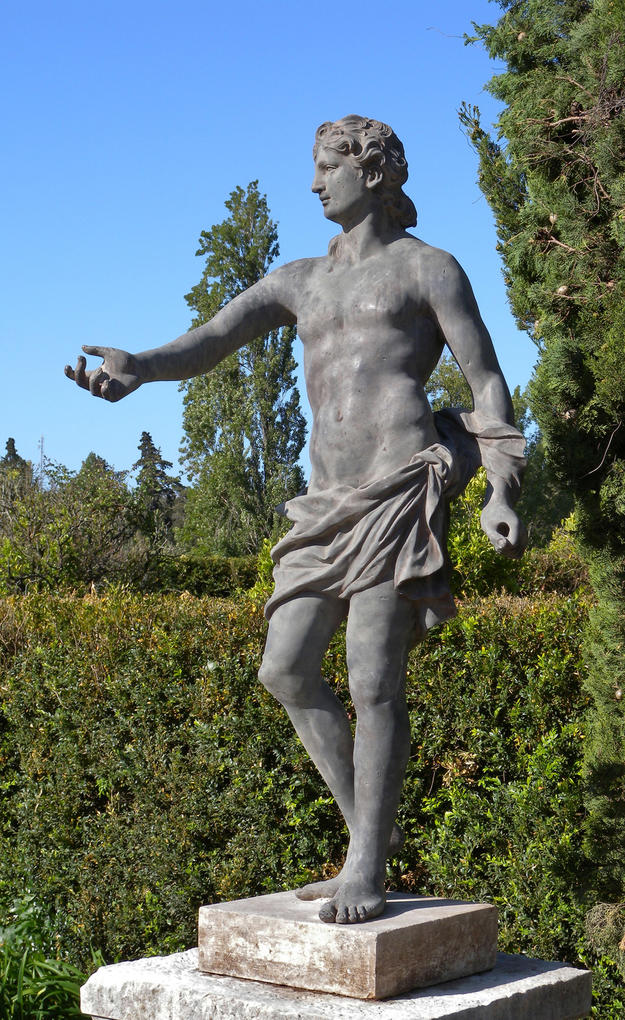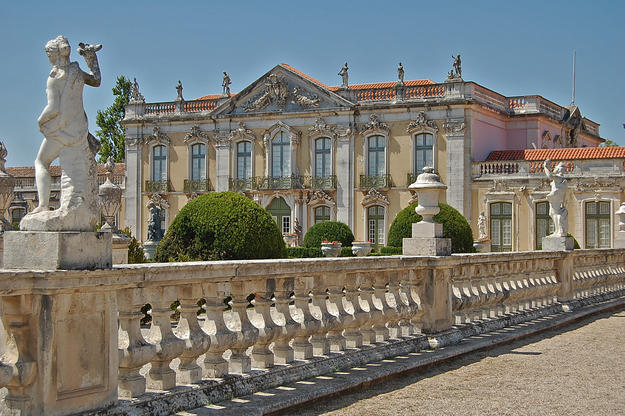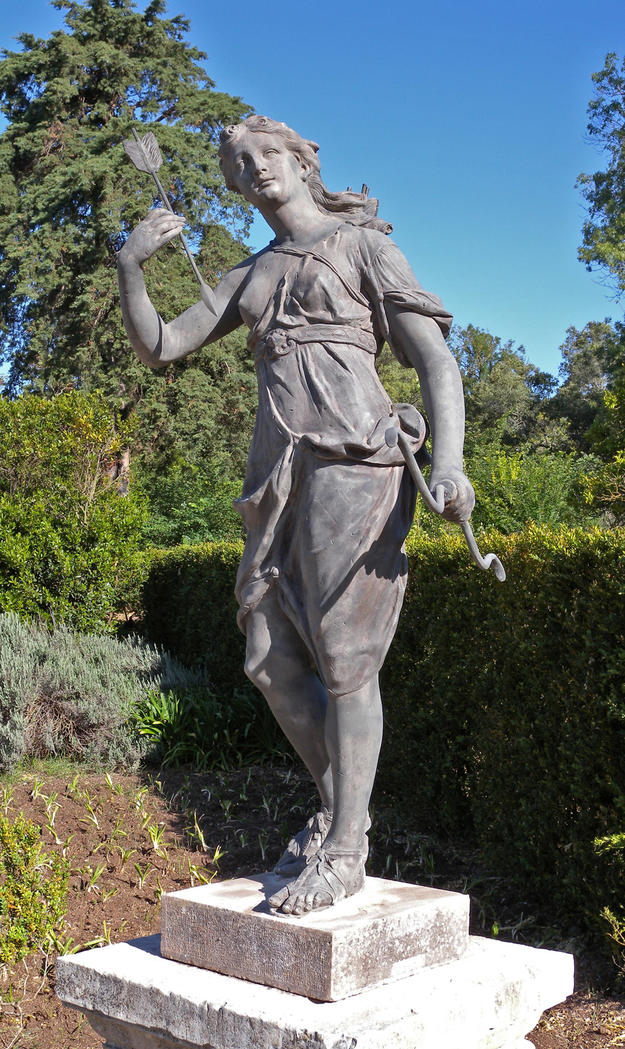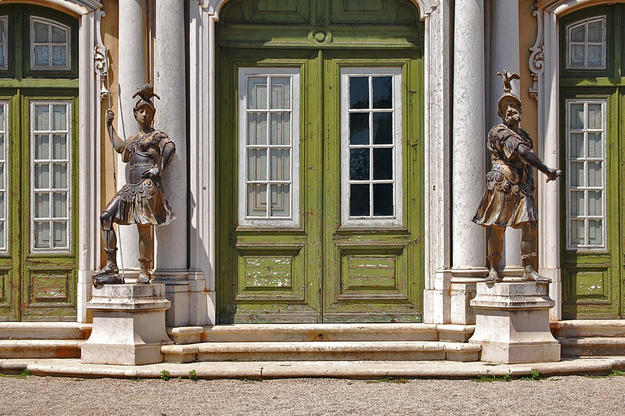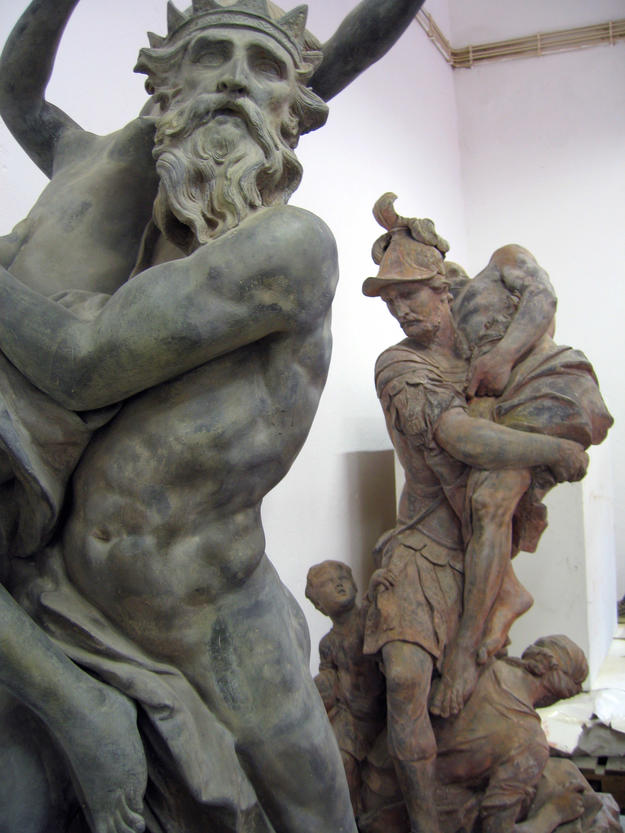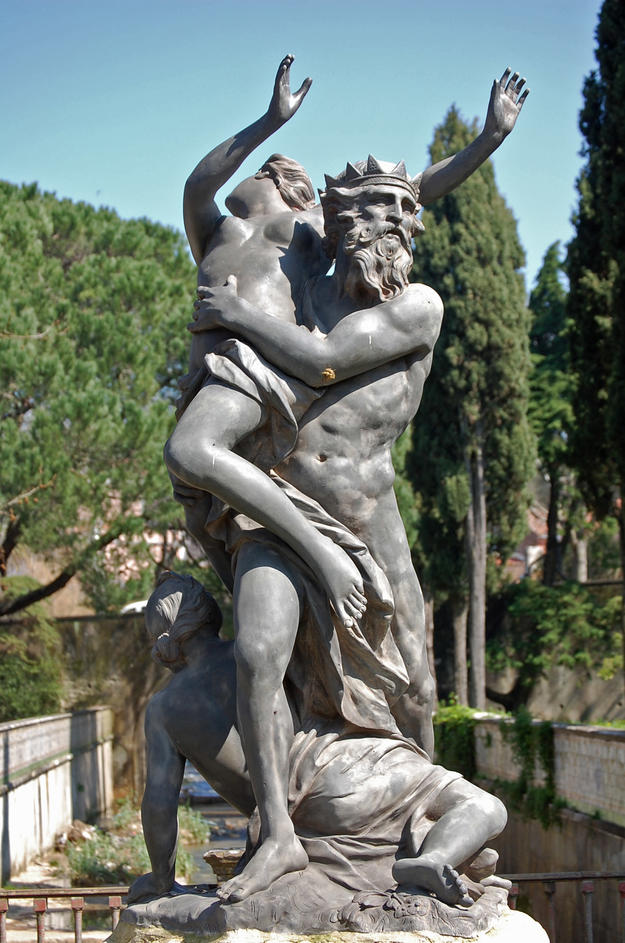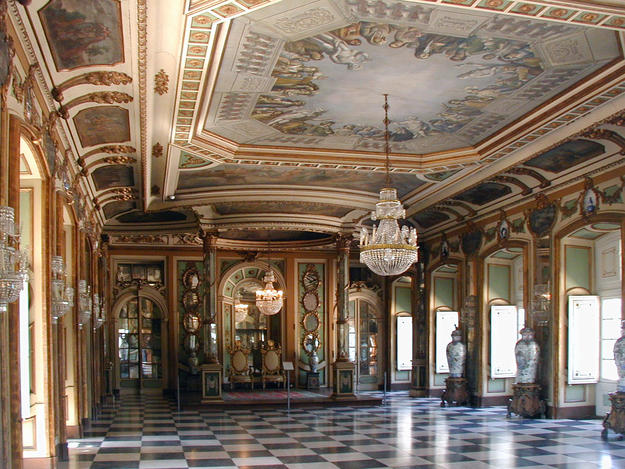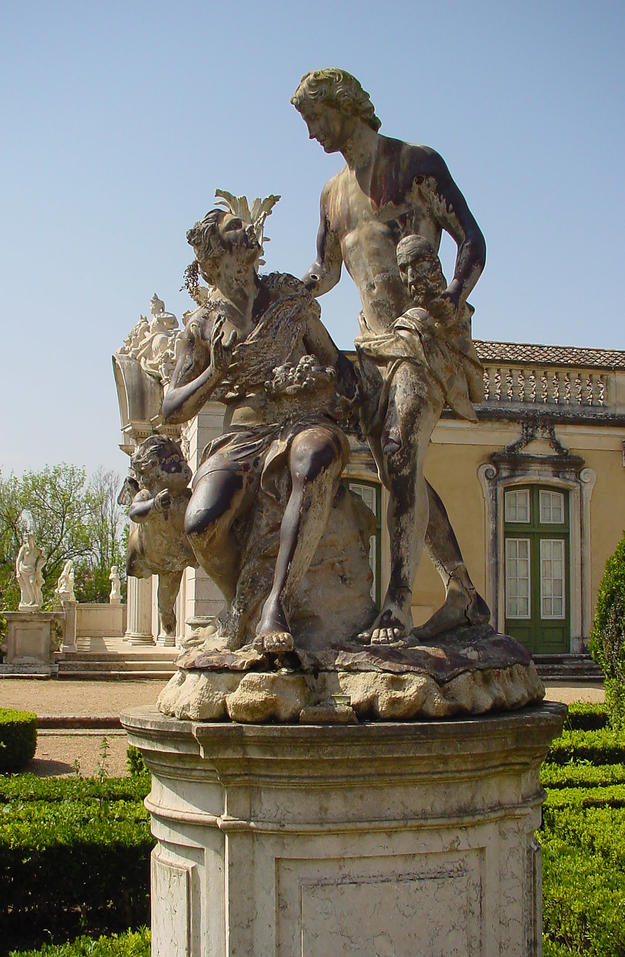Queluz Palace Garden
The Queluz Palace Garden was built by King Pedro III in the eighteenth century as a summer retreat. Renowned for its sculptures, ornate fountains and waterfalls, a Grand Canal, numerous lakes, and ceramic tiles—or azulejos—decorated with historic scenes, it is a marvel of hydraulics, with extensive systems providing water to the garden, the fountains, and palace. Pathways are graced by Italian and British sculptures, many portraying mythological themes, and a set of lead sculptures by British artist John Cheere. Centuries of exposure to the elements and natural aging left these extraordinary sculptures in poor condition.
Demonstrating our capacity to preserve a designed environment
WMF Portugal launched a conservation program at the site in 2004. Through collaboration with World Monuments Fund Britain, the Portuguese Government, and local institutions, this project resulted in the restoration of the gardens and conservation of decorative features. Specialized training workshops were held for the conservation of stone, lead, and decorative tiles. From 2004 to 2006, the garden’s Grand Canal was a special focus. Forty-thousand tiles were digitally mapped to review conditions and conservation needs, followed by repairs and cleaning. Training workshops for conservation of the marble and limestone statues and balustrades were organized for local artisans and workers who monitor conditions and undertake regular maintenance. Horticultural planning was necessitated—diseased sycamore trees were removed and plant growth was monitored along the Canal to preserve the garden design and protect the conserved areas from overgrowth that could damage fragile materials.
WMF Britain organized the conservation of John Cheere’s extraordinary sculptures. Portuguese conservators, including those trained in workshops we organized, restored the remaining sculptures and fountains in-situ. The project allowed us to demonstrate our capacity to preserve a designed environment, focusing simultaneously on issues of materials restoration, engineering, landscape renewal, and statuary conservation. The Queluz Palace Garden project also served to bring international expertise to Portugal and train local technicians, and was the first collaboration between our affiliates in Portugal and Britain. It has proven effective in the development of the maintenance methodology for the stone statues.

